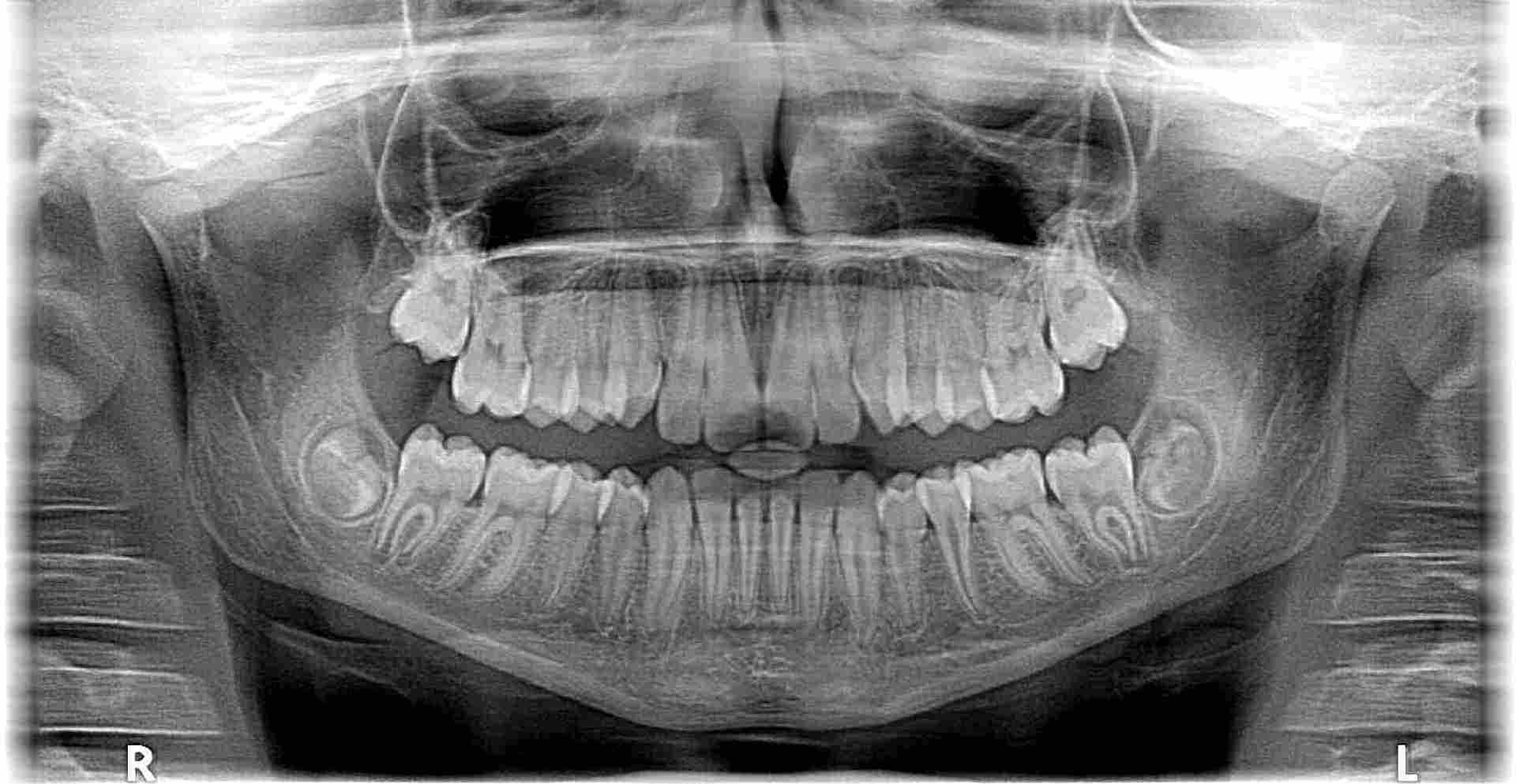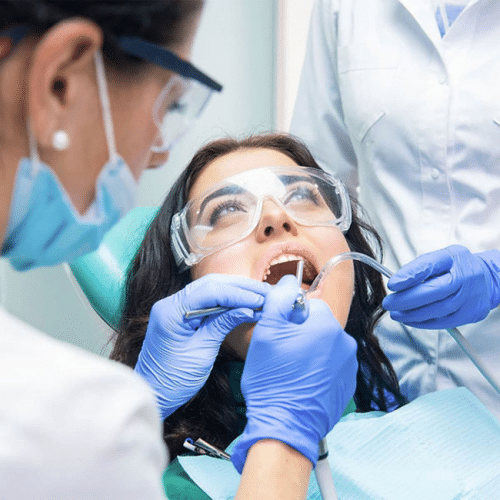Dental X-Rays:
Before your dental treatment, your dentist may require a large, full mouth dental x-ray called a panoramic x-ray or OPG. Please inform your dentist if you’re pregnant before any x-rays are taken. Panoramic or OPG x-rays are needed to aid your dentist in examining wisdom teeth, sinus problems, possible lesions of the jawbone such as cysts or tumours, jawbone fractures and generalised bone loss in patients with periodontal or gum disease.
Intraoral Radiograph/X-Rays:
Intraoral x-rays are the most common type of dental x-ray as they give a high level of detail. These x-rays allow dentists to examine teeth for cavities and tooth decay. Intraoral x-rays allow dentists to examine the roots of teeth and check the surrounding bone around the roots of teeth. This can help dentists detect gingivitis (inflammation of the gums) or gum disease(periodontitis) involving bone loss around the roots of teeth. It is important for your dentist to detect bone loss around the roots of teeth as this can result in loose teeth. Intraoral radiographs allow dentists to examine the progress of developing teeth.
Depending on your dental treatment plan, your dentist may choose from a variety of intraoral x-rays such as:
Bite-wing x-rays: A bite-wing x-ray highlights the crowns of the back teeth. They’re taken on either one or two sides of the mouth. These x-rays show the upper and lower premolars and molars. Patients are asked to bite down on a wing shaped x-ray holder during the x-ray.
Periapical X-ray: A periapical x-ray looks similar to a bite-wing x-ray. A periapical x-ray shows the entire length of the root of a tooth from the crown to the root tip.
Occlusal X-ray: An occlusal x-ray is larger than a usual x-ray. This kind of x-ray highlights tooth development and placement of teeth in children and shows the full arch in either the upper or lower jaw.
3D Cone Beam Computed Tomography (CBCT) scans are useful in dental implant treatment and complex root canal treatment provision.


























